Jian Zhan, a specialty product from Jianyang District, Nanping City, Fujian Province, China, is a product with a protected geographical indication in China.
In December 2016, the General Administration of Quality Supervision, Inspection and Quarantine of China approved the implementation of geographical indication product protection for “Jian Zhan.”
I. Classification of Jian Zhan
Jian Zhan cups generally have a large mouth and a small base, some shaped like a funnel. They typically have a shallow ring foot, often with trimmed edges (commonly known as chamfering), and a slightly outward-sloping foot base.
A few have solid feet (mainly small round bowls). The design is simple and robust, with a generally heavy feel.
Jian Zhan cups are divided into four main categories: open mouth, flared mouth, constricted mouth, and bundled mouth, each further classified into large, medium, and small sizes. Small round bowls fall under the small constricted mouth category.

- Open Mouth Bowl: The rim flares outward, with a sharp or rounded lip. The sides are either straight or slightly curved, with a shallow belly that curves inward.
It has a shallow ring foot and is shaped like a funnel, commonly referred to as a “conical bowl.” These are commonly found in medium and small sizes, with large sizes being rare. - Flared Mouth Bowl: The rim flares outward with a slightly irregular lip, angled sides, and a shallow ring foot.
They can be divided into large, medium, and small sizes.
Large-sized bowls in this category are more common compared to others, though the production yield is low, making them especially valuable; medium and small sizes are more common. - Constricted Mouth Bowl: The rim curves slightly inward, with sloped, curved sides and a shallow ring foot.
The design is fuller. These are commonly found in medium and small sizes, with a higher proportion of small sizes, some having a round, solid foot. - Bundled Mouth Bowl: The rim flares inward with slightly curved sides, curving inward at the base.
It has a shallow ring foot, and the area below the rim is constricted into a shallow groove about 1-1.5 cm wide.
This groove is designed to help measure the amount of tea and prevent overflow during tea competitions, commonly known as the “water line.”
These bowls have a deeper belly, with a fuller overall shape and a heavier feel.
They are commonly found in medium and small sizes, with a higher proportion of medium sizes.
They are the most representative type of Jian Zhan and one of the most produced, with the most excavated or extant pieces.

II. Characteristics of Jian Zhan
Jian kiln black glaze is a type of crystalline glaze with high iron content, making it suitable for firing black glaze.
The lime glaze has a strong viscosity, and its greatest feature is that it flows easily at high temperatures, so Jian Zhan cups often have a glaze dribble at the bottom of the outer wall, while the glaze layer along the rim is thin and appears reddish-brown, sometimes resembling a “rim of a thorn.”
The basic characteristics of Jian kiln black porcelain body are as follows: the cross-section is black or gray-black, black-brown, due to high iron content; the body is thick, solid, and hard, with a metallic sound when tapped, commonly known as “iron body,” with a heavy feel.
It contains many sand particles, so the body is relatively rough, and exposed areas feel coarse to the touch.
From a firing process perspective, Jian kiln black porcelain is fired at high temperatures.
If the clay is too finely washed, the vessel easily deforms. Because the Jian kiln black porcelain body is thick and contains fine pores, it retains the heat of the tea well, making it suitable for tea competitions.
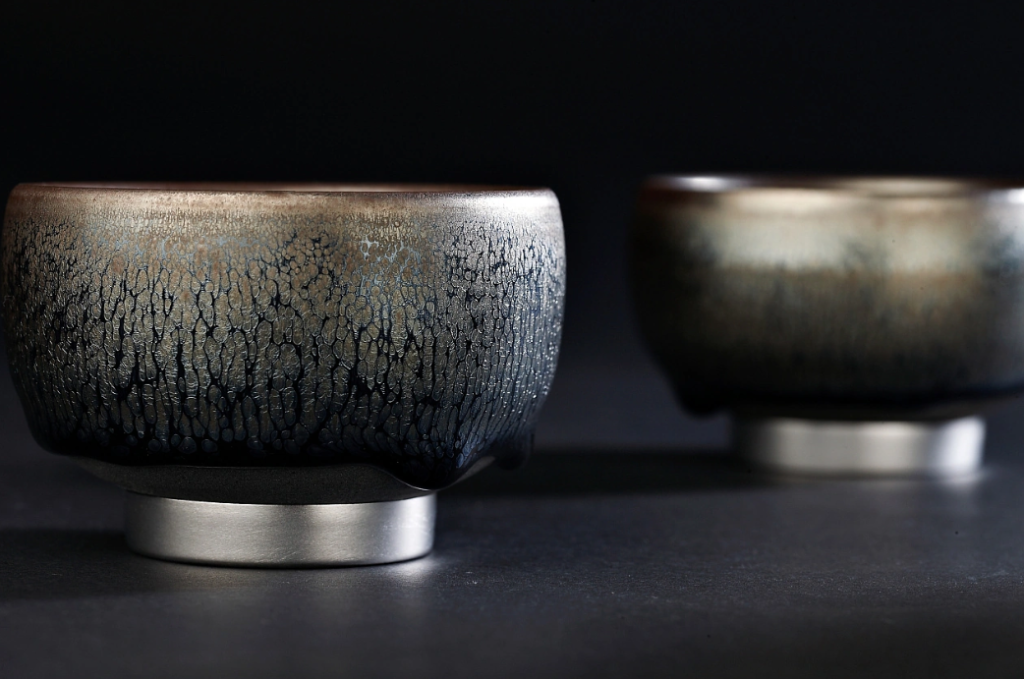
III. The Environment of Jian Zhan Production
Jian Zhan is produced in Jianyang District, Nanping City, Fujian Province, China.
As of September 2015, more than 50 types of minerals have been identified in the Nanping area, with proven reserves of more than 30, including copper, lead, zinc, coal, iron, niobium, tantalum, glass, gold, silver, platinum, palladium, tungsten, tin, graphite, pyrite, fluorite, kaolin, talc, barite, limestone, dolomite, serpentine, potash feldspar, mica, piezoelectric quartz, waxstone, alum, perlite, and phosphate.
Nanping City has 11 identified large mineral deposits, such as piezoelectric quartz, melting quartz in Zhenghe, pyrite in Pucheng, fluorite in Shaowu, Jianyang, Songxi, Guangze, graphite in Jianyang, niobium-tantalum in Yanping, and limestone and cement silica raw materials in Shunchang.
There are 15 medium-sized mineral deposits, including 4 lead-zinc mines, 4 fluorite mines, 1 limestone mine, 2 serpentine mines, 2 pyrite mines, 1 niobium-tantalum mine, and 1 cement silica raw material deposit.
There are more than 80 small-sized mineral deposits. There are over 700 known mineralized points, more than 200 geochemical anomalies, over 200 heavy mineral anomalies (including 14 gold heavy mineral anomalies and 112 tungsten-tin-molybdenum heavy mineral anomalies), over 50 stream sediment anomalies, over 20 magnetic anomalies, and hundreds of surface magnetic anomalies, making it suitable for producing Jian Zhan.
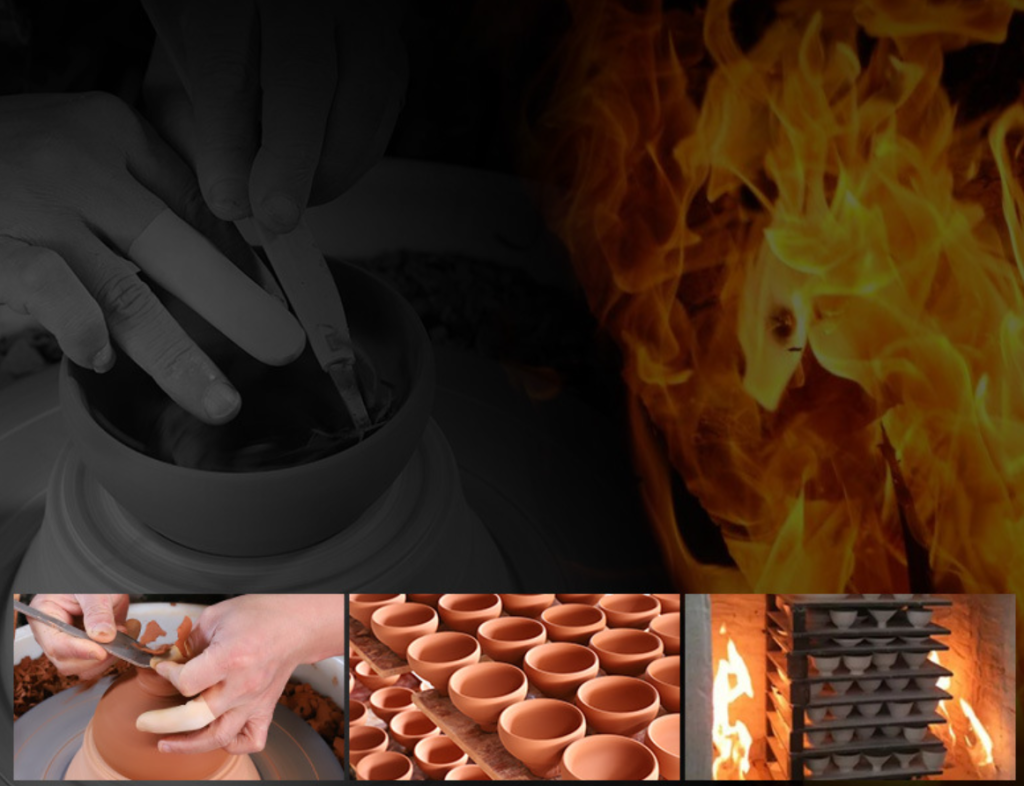
IV. The Historical Origin of Jian Zhan
Jian Zhan was first recorded in the Tang Dynasty and became popular during the Song Dynasty.
During the Song Dynasty, Jian kiln began producing Jian Zhan, and some famous poets of the time praised it in their writings, for example: “The new purple cup with hare’s fur marks,” “Surprised by the hare’s fur spots on the noon cup,” “Jian’an porcelain bowl with partridge spots,” “Pine wind roaring and hare’s fur frost,” “The partridge cup surface has clouds around the words, and the hare’s fur cup has snow in its core,” “Sipping spring dew from partridge spots.”
In the 1980s, the craft of Jian Zhan was revived. Currently, Jian Zhan has been sold to international markets, including the United States, Japan, South Korea, Singapore, Germany, and the United Kingdom.
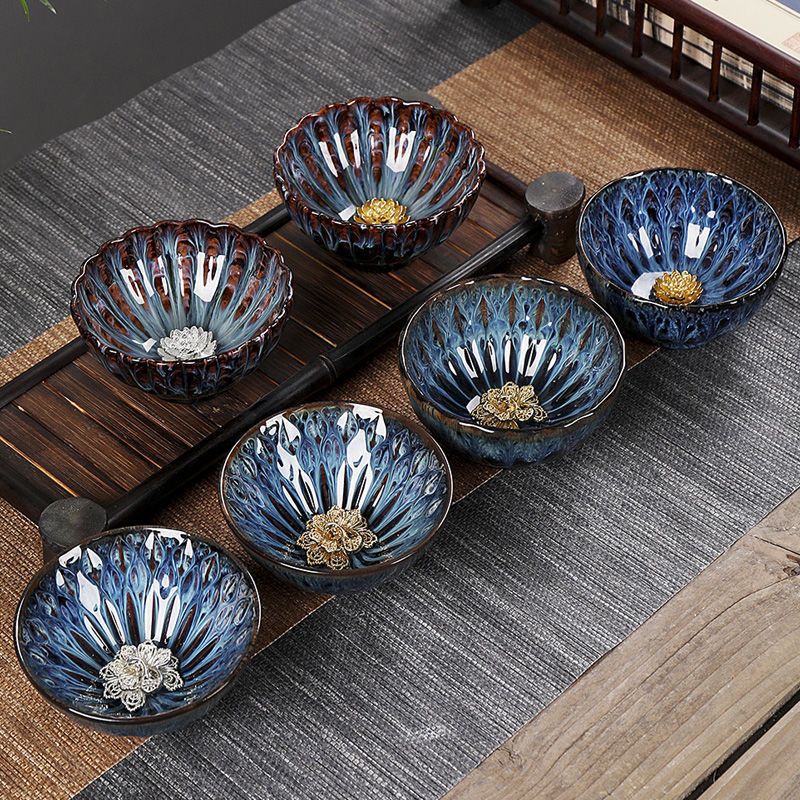
V. Technical Requirements of Jian Zhan
- Product Types
Jian Zhan is a black-glazed tea cup, categorized based on glaze texture into hare’s fur, oil spot, and other textures (such as partridge spots, black gold, yaobian, and variegated glazes).
- Raw Material Requirements
- Main Raw Materials
- Yellow clay, clay, red clay, and glaze stone sourced from the protected area, characterized by high Fe2O3 content.
- Auxiliary Raw Materials
- Plant ash and pine wood.
- Chemical Composition of Body Clay:
- SiO2 (62–68%)
- Al2O3 (21–25%)
- Fe2O3 (6–10%)
- K2O (2–4%)
- TiO2 (1–1.6%)
- MgO (0.1–0.5%)
- Na2O (0.05–0.12%)
- Chemical Composition of Glaze Stone:
- SiO2 (60–63%)
- Al2O3 (18–19%)
- CaO (5–8%)
- Fe2O3 (4.5–8%)
- K2O (0–3%)
- MgO (0–2%)
- P2O5 (>1%)
- TiO2 (0.5–0.9%)
- Na2O (0–0.1%)
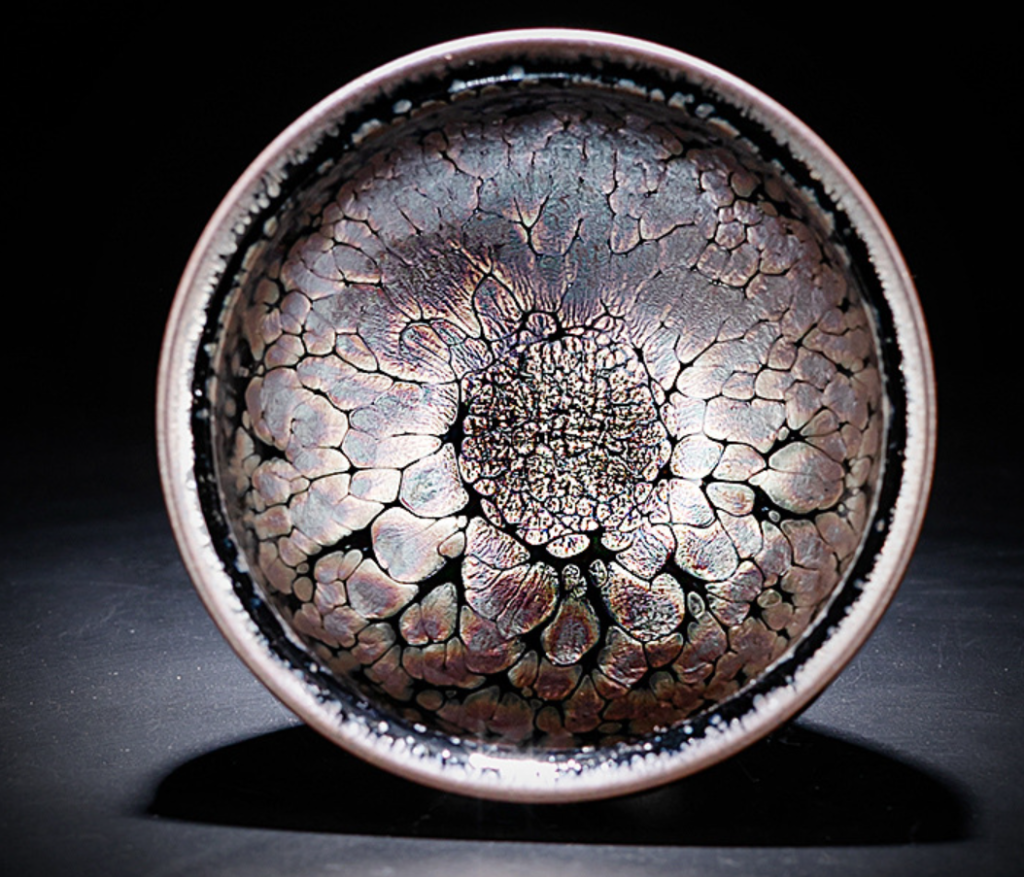
VI. Processing Technology of Jian Zhan
- Process Flow The main production process includes preparing body clay, shaping on the potter’s wheel, drying and glazing, and high-temperature firing.
- Key Techniques
- Body Clay Preparation: The main raw materials, such as yellow clay, clay, and red clay, are proportioned according to requirements, soaked, stirred into slurry, and filtered through a 100- to 200-mesh sieve.
This process is repeated 4-5 times to form a paste-like clay, which is then sealed and stored in a shaded place to ferment.
This ensures the body clay is uniform, delicate, free of visible impurities, with moisture content between 26% and 28% and fineness with less than 0.5% remaining after passing through a 100-mesh sieve. - Shaping: Using manual and semi-manual wheel shaping techniques.
- Drying and Glazing: Once the shaped bodies have dried to a certain extent, they are trimmed and either dried, bisque-fired, and then glazed, or directly glazed after trimming.
The method of internal dousing and external dipping is used to partially expose the body, with the area near the outer side of the foot left unglazed. - High-Temperature Firing: Firing is done using traditional wood kilns, electric kilns, and gas kilns. The atmosphere inside the kiln is controlled to be either oxidizing or reducing, and firing is completed in one step at high temperatures between 1200°C and 1400°C.

VII. Quality Characteristics of Jian Zhan
1. Sensory Characteristics
- Appearance: Jian Zhan is a type of black-glazed porcelain, with the glaze layer generally presenting colors such as yellow-brown, golden yellow, black-brown, blue-black, and silver-white.
The cup is shaped like a funnel, and the glaze layer is lustrous, moist, without glaze flaws, and the surface is rich in change and regularity. - Shape: Generally straight, with a rounded lip and shallow ring foot. It feels solid, heavy, and well-proportioned.
- Body: The cross-section of the body is black, gray-black, or black-brown, with visible sand particles, hard texture, and a metallic sound when tapped.
- Glaze Layer: The glaze layer is smooth, fine, with oil-spot-like patterns and iron spots.
It appears black at first glance, and when the pattern is distinct, the bottom glaze and patterns are layered, feeling flat to the touch and having a metallic sheen.
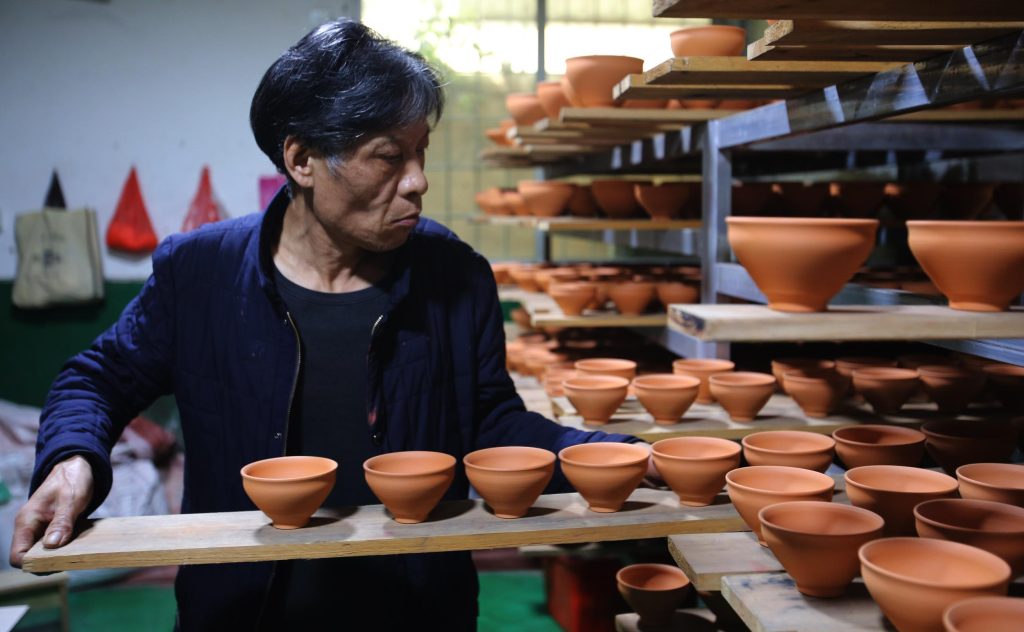
- Physical and Chemical Indicators
- Water Absorption Rate: ≤ 1.5%
- Flexural Strength: ≥ 45 MPa
- Thermal Shock Resistance: ≥ 180°C
